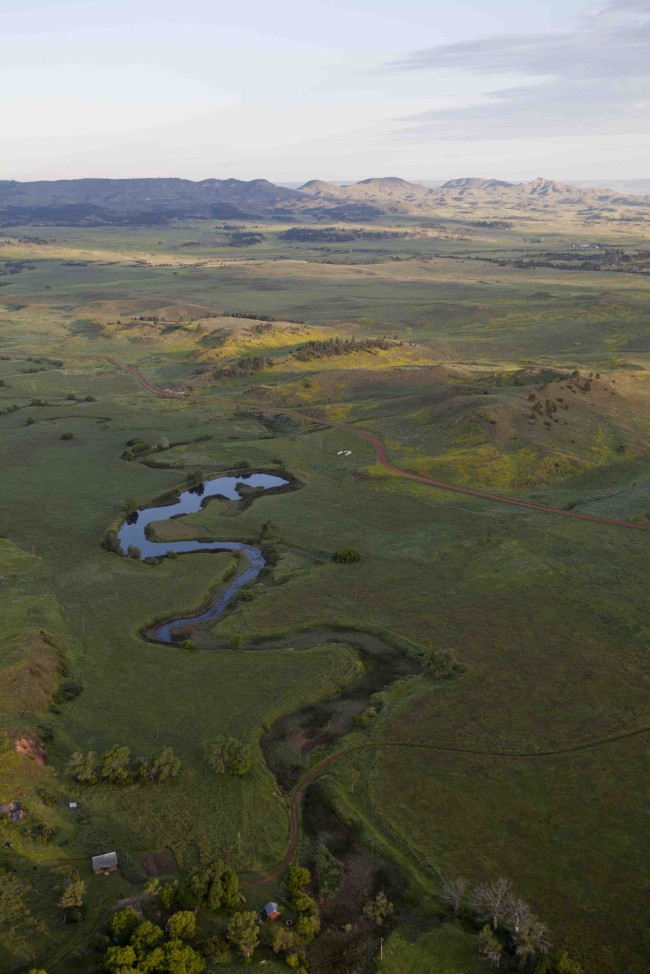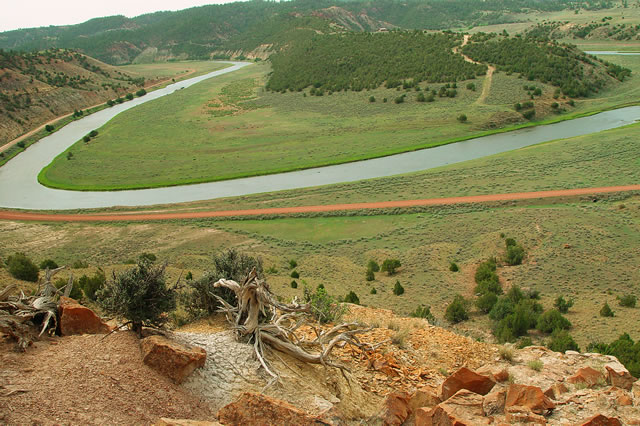by Anne Hedges
The Otter Creek mine is dead. It’s time to admit it and move on. The landscape has so fundamentally changed over the last 6 months for coal generally and the Otter Creek project specifically that it is time to stop throwing good taxpayer money after bad. Up until now DEQ has done a decent job in identifying the deficiencies in Arch Coal’s application to build the largest coal mine in the U.S. But now it’s time for the State to shelve this project. Here are just a few of the reasons the State of Montana should stop paving the way for a coal mine in the Otter Creek valley:

The Otter Creek valley. Photo by Kestrel Aerial Services.
Arch Coal doesn’t have a right to mine much of the coal on the Otter Creek coal tracts. Earthjustice attorney Jenny Harbine reviewed the bankruptcy proceedings and learned that Arch Coal turned back its coal leases to Great Northern properties last year when it couldn’t pay its bills. Arch still maintains the right to mine the state sections of the proposed mine site. However, the checkerboard nature of the ownership in the area means Arch couldn’t develop a mine without the right to develop both the Great Northern leases and the state leases. A company cannot apply to mine land that it doesn’t have a legal right to mine. That’d be crazy. The state should stop analyzing anything related to the mine until Arch Coal has a legal right to mine that property. Period.
- Arch Coal abandoned the project. Arch Coal declared bankruptcy in January. It owes the state of Montana over $60,000 for the permit application process. Arch’s bill is WAY overdue. The state didn’t enter the bankruptcy proceedings so it’s not likely to ever see a dime of that money. Until Arch pays up, DEQ should stop all work on the proposed mine.

Tongue River. Photo by Drake Barton.
The proposed Tongue River Railroad was the only means available to move the coal out of the Otter Creek valley. The Surface Transportation Board shelved the railroad this week after 30 years of hand-wringing. Without a transit system to move coal to market, there cannot be a coal mine.
- Coal markets have declined precipitously nationwide. Five of the largest coal mining companies have recently declared bankruptcy. Natural gas has overtaken coal as the leading electricity source in the U.S. and natural gas prices are expected to stay low for years to come.
- Otter Creek coal was destined for Asian markets. The mine was proposed when coal was going for over $100/ton. Today it is at $56 a ton; not enough for any coal mining company to justify increasing production. Powder River Basin coal mines have decreased production by 35% in just the last year. The purported markets for the Otter Creek coal have vanished.
- Finally, DEQ seems unable to do its job in protecting water quality near existing coal mines, let alone a new one. MEIC has received two favorable rulings in the last few months in which independent legal tribunals have agreed that DEQ is not following the law when it comes to permitting water pollution discharges from existing mines. Until DEQ addresses the existing problems at currently operating coal mines and issues permits that force companies to follow the law by protecting downstream users and aquatic life, it should stop all permitting activity.
DEQ shouldn’t work on a permit for a bankrupt company that doesn’t pay its bills, doesn’t have a right to actually mine the coal, and doesn’t have the means to transport its product to a market that no longer exists.
Enough is enough. Let’s move on. There’s important work to do cleaning up past mistakes and moving forward on a clean energy future for Montana.


